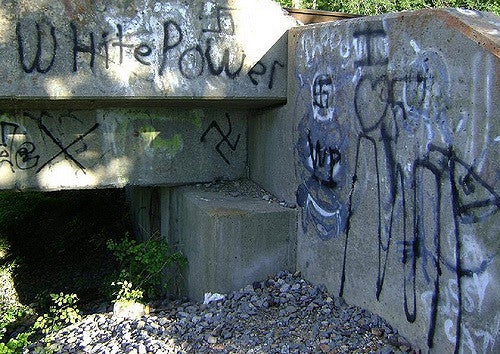
By Deepak Bhargava and Kica Matos
In his continued attempt to purge our nation of immigrants of color, President Trump decided to expel 59,000 Haitians who fled a devastating earthquake in search of safety. Already this year he ended Temporary Protected Status, known as TPS, for those from Liberia, Sudan, Sierra Leone, Guinea and several thousand Nicaraguans. Meanwhile, hundreds of thousands of immigrants from other Central America are anxiously awaiting a decision about their futures in January. Temporary Protected Status is a program that allows immigrants fleeing war, genocide or natural disaster to seek refuge in the United States. In many cases, ending TPS amounts to a death sentence for people forced to return to unsafe and violent conditions.
It is time we call what this Administration is doing by its proper name: Ethnic cleansing. Simply put, Trump wants to get rid of immigrants who are black, brown or don’t fit his delusion of how Americans should look.
The UN Commission defines ethnic cleansing as an attempt to create ethnically, homogeneous geographic areas through the deportation or forcible displacement of people belonging to particular ethnic groups.
Ethnic cleansing can take insidious forms. History is replete with examples of ethnic cleansing through deportation and forced migration. Muammar Gaddafi famously forcibly expelled some 150,000 Italians after gaining power. In October 2006, Niger attempted to deport 150,000 Arabs living in the Diffa region of eastern Niger to Chad. More than 100,000 people remain refugees since the 1990 mass expulsion of southern Lhotshampas people by the northern Druk majority in Bhutan. There are dozens of other examples; historically the use of mass deportation machinery has been a crucial element of ethnic cleansing.
There is no recent precedent in U.S. history for what we’re experiencing now. You have to go back to 1954’s Operation Wetback, which forcibly removed 1.1 million Mexicans by drawing a dubious line between who was and who was not an American; the Japanese internment camps during World War II; or to the anti-immigrant hysteria of the 1920s to find an equivalent.
Let’s consider the pieces of the ethnic cleansing case: There is President Trump’s stated intention to detain and deport millions of undocumented immigrants – overwhelmingly people of color. He has racialized this campaign, repeatedly maligning Mexican immigrants. All over the country, we hear of Latinos being targeted by Trump’s enforcement machinery. The threat of being torn apart from their family and forcibly removed from the country they call home is becoming a stark reality. Trump through his ICE agents are rounding up immigrants on their way to work and shackling, detaining and deporting them before they have due process or can even let their families know what is happening. There is also the ban on migration from majority Muslim countries; an effective ban on refugee admissions and of course the notorious wall with Mexico. Add to that the repeal of DACA, which protected 800,000 DREAMers from deportation. And, now the potential end of TPS for up to 400,000 immigrants of color – returning them to countries where their lives may be in danger (or forcing them to go underground in the U.S., actually expanding the number of undocumented people in this country).
Some of the biggest pieces of this ethnic cleansing case are also found in proposals to restrict legal migration. Arkansas Republican Sen. Tom Cotton has proposed to undo the core tenets of family-based migration by shredding the cornerstones of the Immigration and Nationality Act of 1965 that finally ended racial quotas for people seeking to immigrate from Latin America, Asia or Africa.
The final piece of the case is not about policy – it is about deliberately whipping up an environment of fear and racial hatred that leads to hate crimes and self-deportation. We saw it on the campaign trail when he attacked Mexicans as rapists and drug dealers. The president’s actions are fanning the flames of ethnic cleansing and encouraging individuals to join him in his efforts. When a white supremacist, yelling “Get out of my country,” murders an Indian immigrant in Kansas and a billion people in India watch or read about it – Indian parents tell their children not to come to America. That is just as powerful as a new law or executive order. Trump’s dog whistle was piercing when he pardoned Joe Arpaio, the former Arizona sheriff and the national symbol of anti-immigration malice and divisiveness, calling him, “an American patriot.”
President Trump’s latest decision on TPS is anything but surprising. His animus against immigrants of color is clear. But he’s now moved decisively beyond rhetoric and everyday racism into the realm of intentional ethnic cleansing. The 50,000 Haitians who stand to lose everything want better lives for themselves and their children. Each is a human being with value and rights who deserves respect and dignity. Each is a mother and father, sister and brother, neighbor and friend. Defeating this administration’s ruthless campaign of ethnic cleansing is the central moral imperative of our time.
Deepak Bhargava is president of the Center for Community Change and Kica Matos is the director of immigrant rights and racial justice for the Center for Community Change Action.
